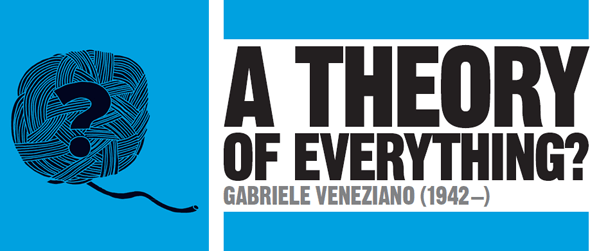
IN CONTEXT
Physics
1940s Richard Feynman and other physicists develop quantum electrodynamics (QED), which describes quantum-level interactions due to the electromagnetic force.
1960s The standard model of particle physics reveals the full range of subatomic particles known so far and the interactions that affect them.
1970s String theory falls out of favour temporarily as quantum chromodynamics appears to offer a better explanation of the strong nuclear force.
1980s Lee Smolin and Italian Carlo Rovelli develop the theory of loop quantum gravity, which removes the need to theorize hidden extra dimensions.
Put simply, string theory is the remarkable – and still controversial – idea that all matter in the Universe is made up not of point-like particles, but of tiny “strings” of energy. The theory lays out a structure that we cannot detect, but that explains all the phenomena that we see. Waves of vibration within these strings give rise to the quantized behaviours (discrete properties such as electric charge and spin) that are found in nature, and mirror the harmonics that can be produced, for example, by plucking a violin string.
The development of string theory has had a long and bumpy road, and it is still not accepted by many physicists. But work on the theory continues – not least because it is currently the only theory trying to unite the “quantum gauge” theories of the electromagnetic, weak, and strong nuclear forces with Einstein’s theory of gravity.
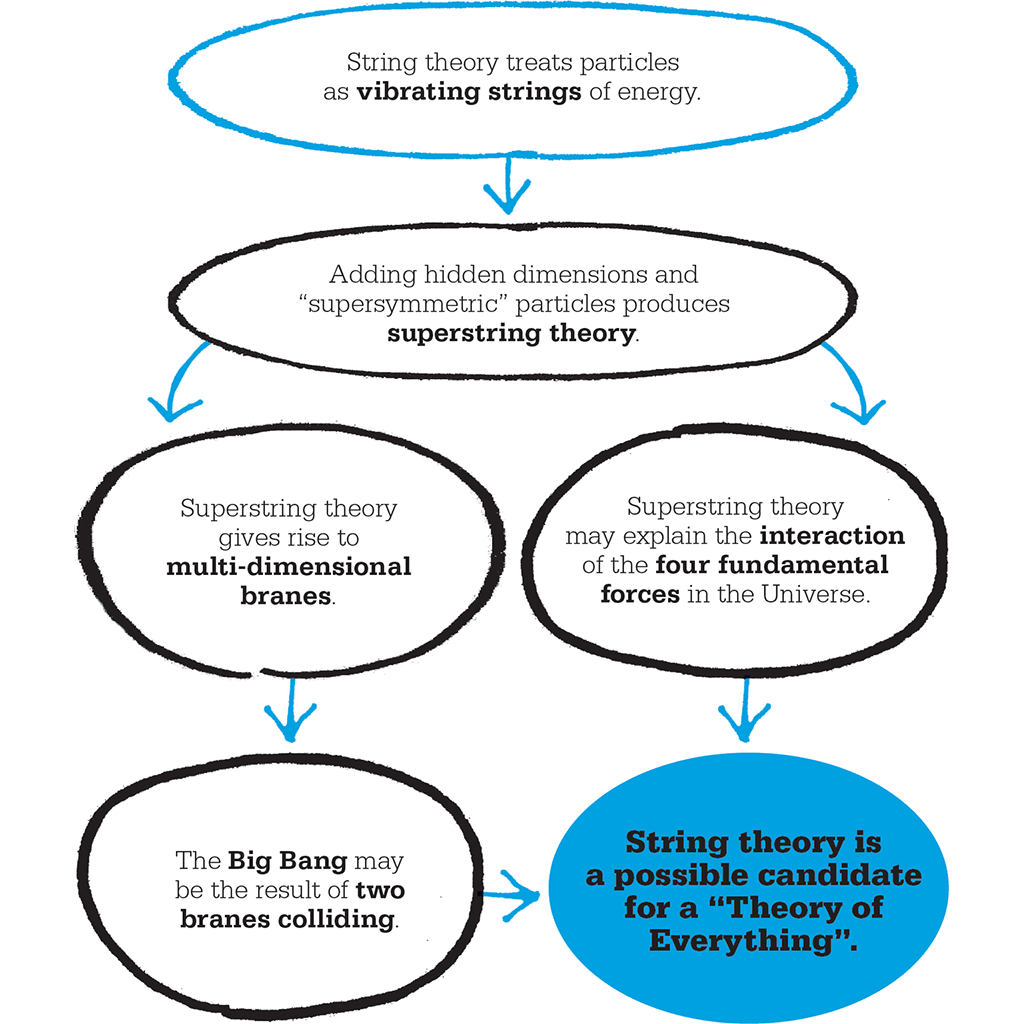
Explaining the strong force
String theory began life as a model to explain the strong force that binds together the particles in the nuclei of atoms, and the behaviour of hadrons, the composite particles that are subject to the influence of the strong force.
In 1960, as part of an ongoing study of the properties of hadrons, American physicist Geoffrey Chew proposed a radical new approach – abandoning the preconception that hadrons were particles in the traditional sense, and modelling their interactions in terms of a mathematical object called an S-matrix. When Italian physicist Gabriele Veneziano investigated the results of Chew’s model, he found patterns suggesting that particles would appear at points along straight one-dimensional lines – the first hint of what we now call strings. In the 1970s, physicists continued to map these strings and their behaviour, but their work began to throw up annoyingly complex and counter-intuitive results. For instance, particles have a property called spin (analogous to angular momentum), which can only take certain values. The initial drafts of string theory could produce bosons (particles with zero or whole-number spins, typically the “messenger” particles in models of quantum forces), but not fermions (particles with half-integer spins, including all matter particles). The theory also predicted the existence of particles that move faster than the speed of light, thus travelling backwards in time.
One final complication was that the theory could not properly work without assuming the existence of no fewer than 26 separate dimensions (instead of the usual four – three dimensions of space, plus time). The concept of extra dimensions had been around for a long time: German mathematician Theodor Kaluza had attempted to unify electromagnetism and gravity through the use of an extra (fifth) dimension. This was not a problem mathematically, but did pose the question as to why we do not experience all dimensions. In 1926, Swedish physicist Oscar Klein explained how such extra dimensions might remain invisible on everyday macroscopic scales by suggesting they might “roll up” into quantum-scale loops.
String theory suffered a fall from grace in the mid-1970s. The theory of quantum chromodynamics (QCD), which introduced the concept of “colour charge” for quarks to explain their interaction via the strong nuclear force, offered a much better description. But even before this, some scientists had been murmuring that the theory was conceptually flawed. The more work they did, the more it seemed as though strings were not describing the strong force at all.
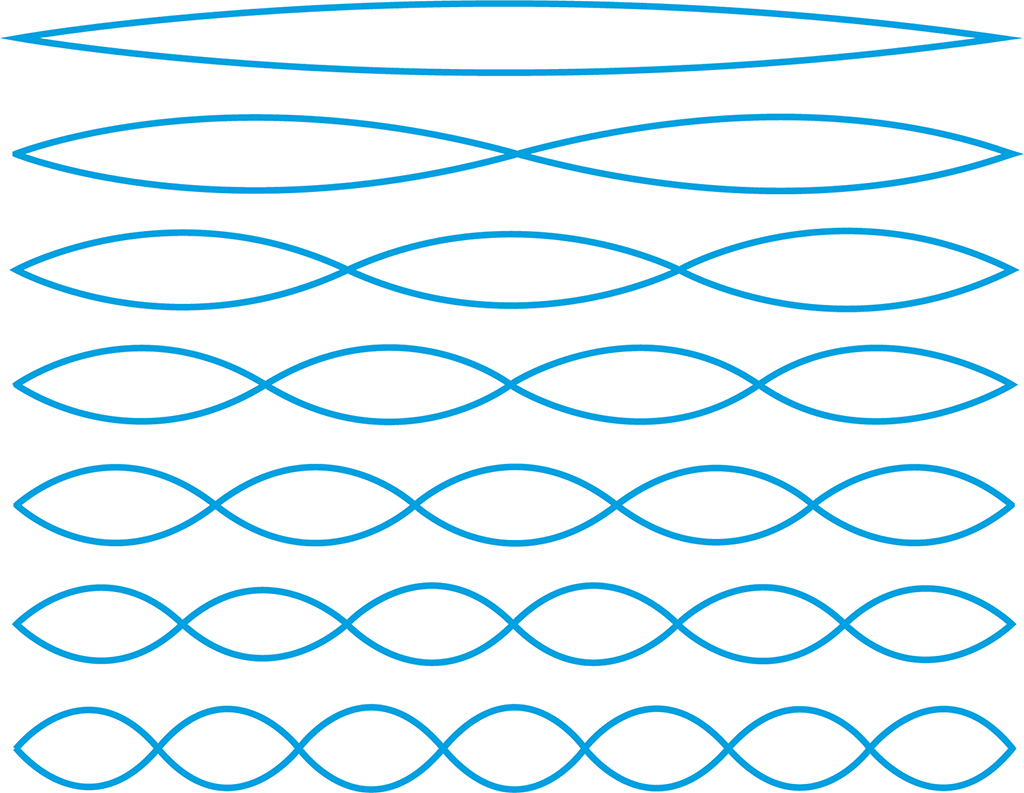
According to string theory, the quantized properties we observe arise when a string takes on different vibrational states, similar to the harmonic notes played on a violin.
"String theory is an attempt at a deeper description of nature by thinking of an elementary particle not as a little point but as a little loop of vibrating string."
Edward Witten
The rise of superstrings
Groups of physicists continued to work on string theory, but they needed to find solutions to some of its problems before the wider scientific community would take it seriously again. A breakthrough came in the early 1980s with the idea of supersymmetry. This is the suggestion that each of the known particles found in the standard model of particle physics has an undiscovered “superpartner” – a fermion to match every boson, and a boson to match every fermion. If this were the case, then many of the outstanding problems with strings would promptly vanish, and the number of dimensions required to describe them would be reduced to ten. The fact that these additional particles remain undetected might be due to the fact that they are only capable of independent existence at energies far above those produced in even the most powerful modern particle accelerators.
This revised “supersymmetric string theory” soon became known more simply as “superstring theory”. However, major issues remained – particularly the fact that five rival interpretations of superstrings emerged. Evidence also began to mount that superstrings should give rise not only to 2-dimensional strings and 1-dimensional points, but also to multi-dimensional structures, collectively known as “branes”. Branes can be thought of as analogous to 2-dimensional membranes moving in our 3-dimensional world: similarly, a 3-dimensional brane could move in a 4-dimensional space.
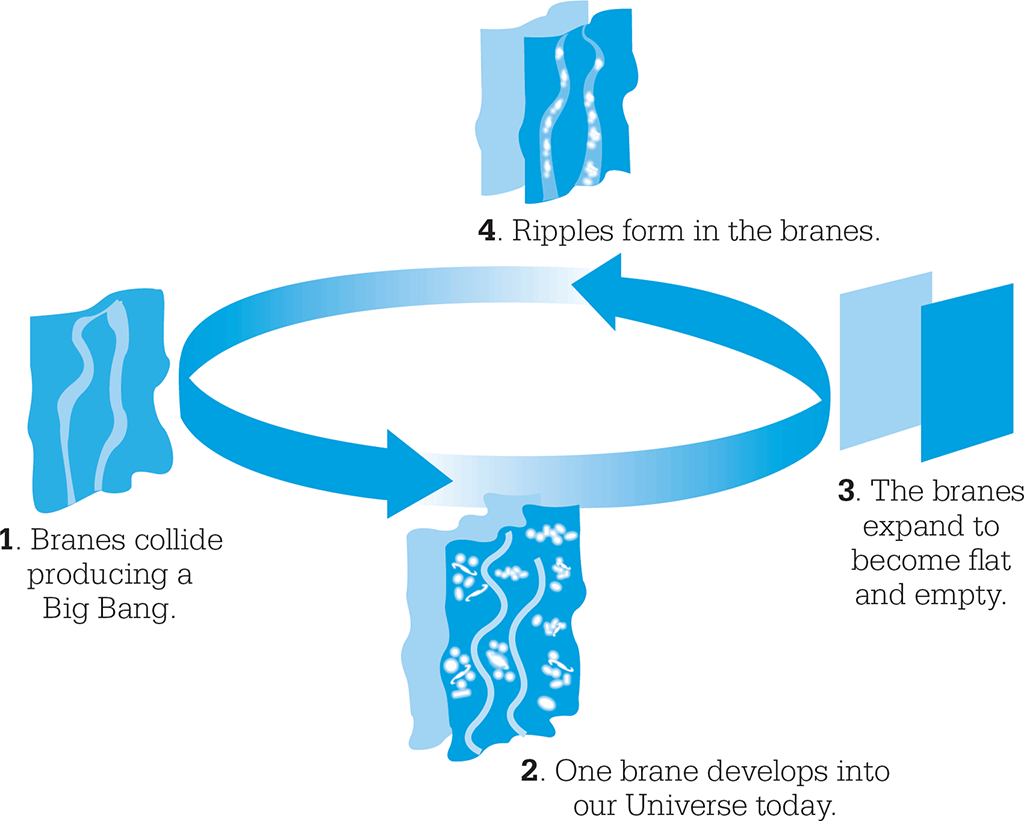
Superstring theory predicts the existence of multidimensional branes. Our Universe might be one such brane. It is suggested that a Big Bang event occurs when two branes collide, producing a “cyclic Universe” model.
"String theory envisions a multiverse in which our universe is one slice of bread in a big cosmic loaf. The other slices would be displaced from ours in some extra dimension of space."
Brian Greene
M-theory
In 1995, US physicist Edward Witten presented a new model known as M-theory, which offered a solution to the problem of competing superstring theories. He added a single additional dimension, bringing the total up to 11, and this allowed all five superstring approaches to be described as aspects of a single theory. The 11 dimensions of space-time required by M-theory mirrored the 11 dimensions required by then-popular models of “supergravity” (supersymmetric gravity). According to Witten’s theory, the seven additional dimensions of space required would be “compactified” – curled up into tiny structures analogous to spheres that would effectively act and appear as points on all but the most microscopic of scales.
The major problem of M-theory, however, is that the detail of the theory itself is currently unknown. Rather, it is a prediction of the existence of a theory with certain characteristics that would neatly fulfil a number of observed or predicted criteria.
Despite its current limitations, M-theory has proved a huge inspiration to various fields of physics and cosmology. Black hole singularities can be interpreted as string phenomena, as can the early stages of the Big Bang. One intriguing upshot of M-theory is the “cyclic Universe” model proposed by cosmologists such as Neil Turok and Paul Steinhardt. In this theory, our Universe is just one of many separate branes separated from each other by minute distances in 11-dimensional space-time, and drifting minutely in relation to one another on trillion-year timescales. Collisions between branes, it has been argued, could result in huge releases of energy and trigger new Big Bangs.
Theories of everything
M-theory has been proposed as a possible “Theory of Everything” – a means of uniting the quantum field theories that successfully describe electromagnetism and the weak and strong nuclear forces with the description of gravity provided by Einstein’s general theory of relativity. Hitherto, a quantum description of gravitation has remained elusive. Gravity appears to be radically different in nature from the other three forces. These three forces all act between individual particles but only on relatively small scales, while gravity is insignificant except when huge numbers of particles conglomerate, but acts across enormous distances. One possible explanation of gravity’s unusual behaviour is that its influence at the quantum level may “leak out” into the higher dimensions, so that only a small fraction is perceived within the familiar dimensions of our Universe.
String theory is not the only candidate for a Theory of Everything. Loop quantum gravity (LQG) was developed by Lee Smolin and Carlo Rovelli from the late 1980s. In this theory, the quantized properties of particles arise not from their string-like nature, but rather from the small-scale structure of space-time itself, which is quantized into tiny loops. LQG and its various developments offer several intriguing advantages over string theory, removing the need for additional dimensions, and it has been applied successfully to several major cosmological problems. However, the case for either string particles or looped space-time as the “Theory of Everything” remains inconclusive.
"If string theory is a mistake, it’s not a trivial mistake. It’s a deep mistake and therefore kind of worthy."
Lee Smolin
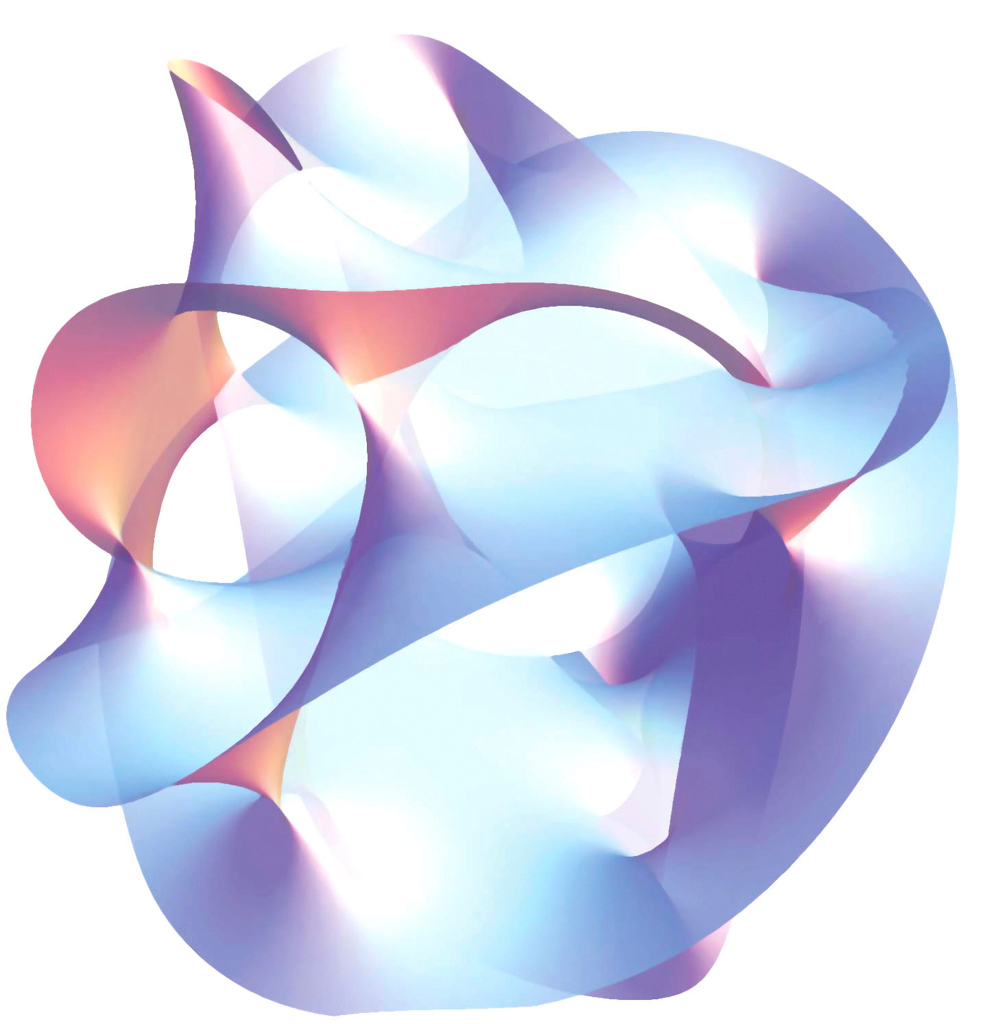
This is a 2-dimensional slice of a 6-dimensional mathematical structure called a Calabi-Yau manifold. It is suggested that string theory’s six hidden dimensions may take this form.
GABRIELE VENEZIANO
Born in Florence, Italy, in 1942, Gabriele Veneziano studied in his home city before obtaining his PhD from Israel’s Weizmann Institute of Science, where he returned in 1972 as professor of physics following a spell at the European particle physics laboratory CERN. While at the Massachusetts Institute of Technology (MIT) in 1968, he hit upon string theory as a model for describing the strong nuclear force, and began to pioneer research into the topic. From 1976 onwards, Veneziano worked mainly at CERN’s Theory Division in Geneva, rising to become its director between 1994 and 1997. Since 1991, he has focused on investigating how string theory and QCD can help to describe the hot, dense conditions just after the Big Bang.
Key work
1968 Construction of a Cross-Symmetric, Regge-behaved Amplitude for Linearly Rising Trajectories
See also: Albert Einstein • Erwin Schrödinger • Georges Lemaître • Paul Dirac • Richard Feynman • Hugh Everett III • Sheldon Glashow • Murray Gell-Mann